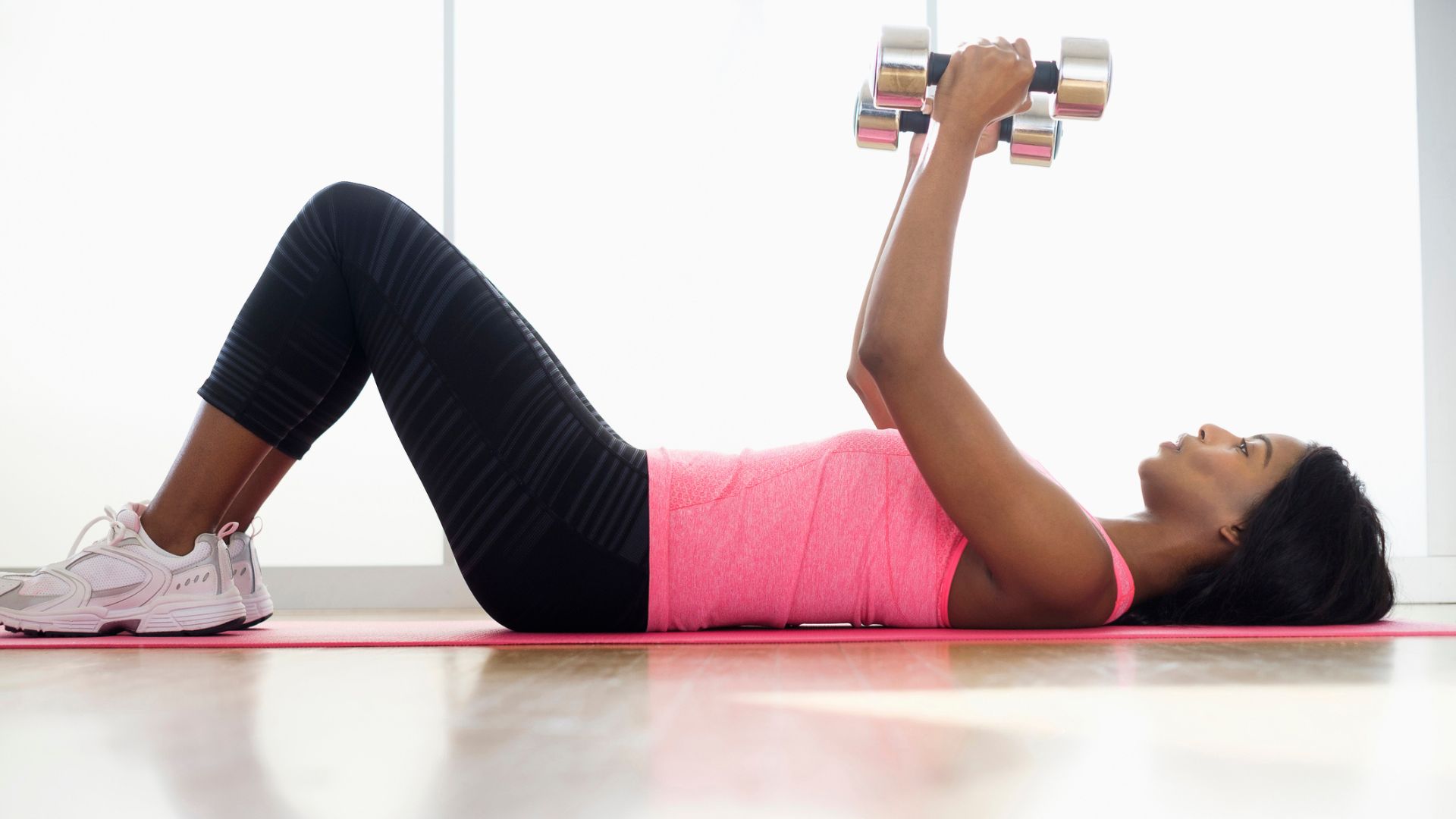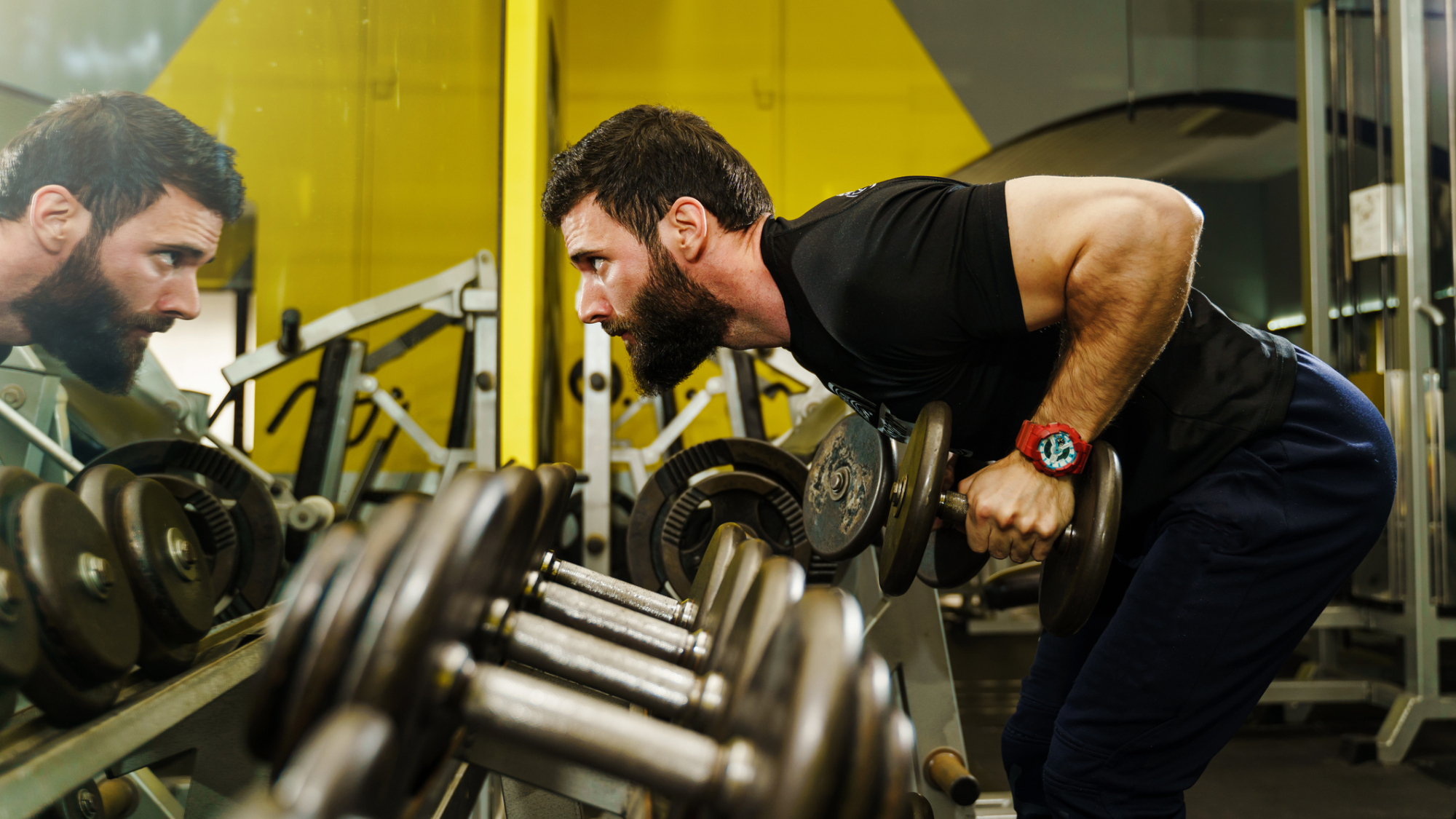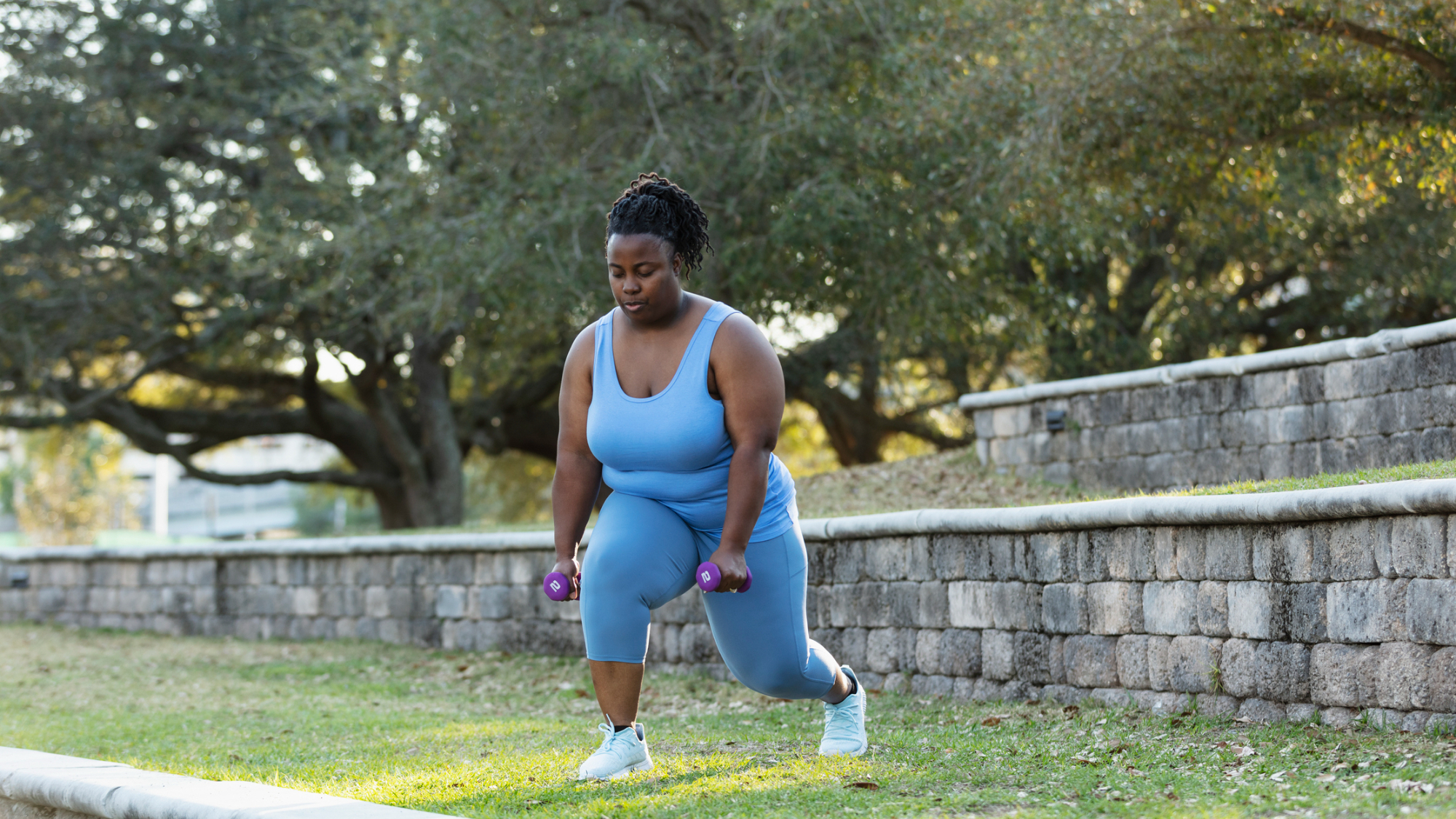
"Strength training has so many health benefits that it should be part of any fitness routine," according to The Gym Group master trainer Jenni Tardiff.
Her point is hard to argue with, considering lifting weights can strengthen your muscles and bones, boost your metabolism and even improve your mood. But where should you start, if the weights area is out of your comfort zone?
Try Tardiff’s four-move full-body dumbbell routine, which can be done at home or in a quiet corner of the gym. It takes 30 minutes and targets a wide range of muscles, including those found in your legs, arms, back and core.
How to do Jenni Tardiff’s four-move dumbbell workout
- Goblet squat 3x12-15
- Chest press 3x12-15
- Bent-over row 3x12-15
- Alternating lunge 3x10 (on each leg)
Perform the exercises listed above as straight sets. This means you’ll do all sets, reps and rests for one exercise before moving on to the next one.
For example, you’ll start with 12-15 goblet squats, rest for 60-120 seconds, then repeat this sequence two more times. Once you’ve finished all three sets, you’re ready to progress to the chest press.
1. Goblet squat

Sets: 3 Reps: 12-15 Rest: 60-120 seconds
- Stand with your feet shoulder-width apart and hold a dumbbell close to your chest with both hands.
- Squat down, keeping your back straight, knees out and your chest up.
- Push through your heels to return to the starting position.
"Goblet squats are perfect for beginners as they target the lower-body muscles and promote proper squat form. The added weight challenges your muscles, building strength and improving overall stability," says Tardiff.
2. Chest press

Sets: 3 Reps: 12-15 Rest: 60-120 seconds
- Lie on your back on a weight bench or the floor. Hold a dumbbell in each hand with your palms facing each other and your arms straight above your chest.
- Without flaring your elbows out to the side, slowly lower the dumbbells until they are at your chest.
- Push them back up to the starting position.
"The dumbbell chest press helps build upper-body strength and muscular endurance, making daily activities easier and promoting a well-balanced physique," says Tardiff.
3. Bent-over row

Sets: 3 Reps: 12-15 Rest: 60-120 seconds
- Stand with your feet hip-width apart, holding a dumbbell in each hand.
- Hinge at your hips, keeping your back straight, and let the dumbbells hang directly beneath your shoulders. This is your starting position.
- Pull the dumbbells towards the bottom of your ribcage, squeezing your shoulder blades together and keeping your elbows back and close to your body.
- Control the dumbbells back to the starting position.
"Bent over rows target the muscles of the upper back. Strengthening these muscles helps improve posture and reduces the risk of back pain, making it an essential exercise for beginners," says Tardiff.
4. Alternating lunge

Sets: 3 Reps: 12-15 (on each leg) Rest: 60-120 seconds
- Stand with your feet shoulder-width apart, holding a dumbbell in each hand.
- Step forward with one foot, keeping your torso upright and lowering your hips until both knees are bent at a 90° angle.
- Push off your front foot, driving through the heel to return to the starting position, then repeat on the other leg.
"The lunge enhances lower-body strength, balance and flexibility, making it an excellent choice for beginners looking to develop a strong foundation," says Tardiff.
Jenni Tardiff's top tips
Tardiff’s first top tip for tackling this workout is to prioritize your form above all else. This will ensure you’re recruiting the right muscles and reducing your risk of injury. As part of your warm-up you could practice each move with just your bodyweight.
Once you feel comfortable with each of the exercises, the next thing to do is to choose the right weight for your dumbbells.
"Start with light dumbbells to master the technique, then you can increase the weight as needed," she says.
"The dumbbell weight should be challenging enough that you can complete 12 repetitions of each exercise but you’re struggling by rep 15," says Tardiff. "If you can do more than 15 repetitions with the correct technique then you should increase the weight."
This will provide the stimulus needed for your body to start making changes, such as strengthening your muscles and bones.
- Read more: What dumbbell weight should I use?
Benefits of strength training
"Weightlifting enhances bone density, helping to reduce the risk of osteoporosis and keeping your body strong. This is especially important as we age.
"It also builds lean muscle mass [which increases your resting metabolic rate] and supports weight management," says Tardiff.
It’s not an exclusive pursuit for muscle-bound gym-goers either.
"It’s brilliant for beginners. Dumbbells are a great way to start your strength training journey as they are so versatile, allowing you to gradually progress the intensity of your workouts. And there are so many exercises you can perform making them very accessible."
Need some help picking your next set of weights? Our guide to the best adjustable dumbbells can help







